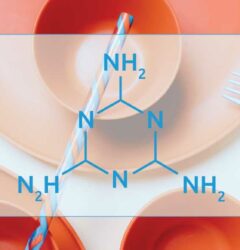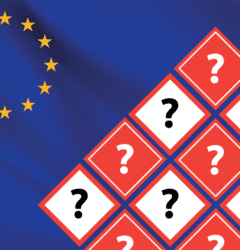15 Mar

Recently, we received an interesting question regarding new requirements and restrictions concerning products for the New Year containing small particles – glitter. The key question here is whether glitter falls under microplastics or synthetic polymeric micro particles, which will be restricted or banned.
The regulation restricting the use of microplastics is available at this address: https://eur-lex.europa.eu/legal-content/EN/TXT/?uri=celex%3A32023R2055
Firstly, it is necessary to determine if glitter indeed falls under microplastics or synthetic polymeric micro particles.
Microplastics or synthetic polymeric micro particles are polymers that are solid and meet both of the following conditions:
(a) they are contained in particles and represent at least 1% by mass of these particles or form a continuous surface coating on the particles;
(b) at least 1% by mass of the particles referred to in point (a) meets one of the following conditions:
(i) all dimensions of the particles are 5 mm or less;
(ii) the length of particles is 15 mm or less, and the length-to-diameter ratio is greater than 3.
The following polymers are exempted from this definition:
(a) polymers resulting from a polymerization process that occurred in nature, regardless of the extraction process used and which are not chemically modified substances;
(b) biodegradable polymers, as demonstrated in accordance with Annex 15;
(c) water-soluble polymers with a solubility in water greater than 2 g/L, as demonstrated in accordance with Annex 16;
(d) polymers not containing carbon atoms in their chemical structure.
The deadlines for the ban on microplastics are not so close – the first restrictions will start to apply in 2027, with the last restrictions in 2035.
Deadlines depend on the type of products:
(a) from October 17, 2029, for synthetic polymeric micro particles for use in fragrance encapsulation;
(b) from October 17, 2027, for “rinse-off products” as defined in point (1)(a) of the preamble to Annexes II to VI to Regulation (EC) No 1223/2009, unless such products are covered by point (a) of this paragraph or contain synthetic polymeric micro particles for use as an abrasive substance, i.e., for skin peeling, deep peeling, or cleansing (hereinafter referred to as plastic microbeads);
(c) from October 17, 2035, for lip products as defined in point (1)(e) of the preamble to Annexes II to VI to Regulation (EC) No 1223/2009, nail products as defined in point (1)(g) of the preamble to Annexes II to VI to the said regulation, and cosmetics within the scope of that regulation, unless such products are covered by point (a) or (b) of this paragraph or contain plastic microbeads;
(d) from October 17, 2029, for products not removed, as defined in point (1)(b) of the preamble to Annexes II to VI to Regulation (EC) No 1223/2009, unless such products are covered by point (a) or (c) of this paragraph;
(e) from October 17, 2028, for detergents as defined in Article 2(1) of Regulation (EC) No 648/2004, waxes, polishes, and air freshener products, unless those products are covered by point (a) of this paragraph or contain plastic microbeads;
(f) from October 17, 2029, for “devices” within the meaning of Regulation (EU) 2017/745 (*5), unless those devices contain plastic microbeads;
(g) from October 17, 2028, for “fertilizing products” as defined in Article 2(1) of Regulation (EU) 2019/1009 that are not covered by the scope of that regulation;
(h) from October 17, 2031, for plant protection products within the meaning of Article 2(1) of Regulation (EC) No 1107/2009 (*6) and seeds treated with those products, and biocidal products as defined in Article 3(1)(a) of Regulation (EU) No 528/2012 of the European Parliament and of the Council (*7);
(i) from October 17, 2028, for products for agricultural and horticultural use not covered by points (g) or (h);
(j) from October 17, 2031, for granular fillers for artificial sports surfaces.
Suppliers must notify downstream users if a product contains microplastics.
Suppliers of synthetic polymeric micro particles or microplastics must provide the following information from October 17, 2025:
(b) the following statement: “The supplied synthetic polymeric micro particles are subject to the conditions laid down in entry 78 of Annex XVII to Regulation (EC) No 1907/2006 of the European Parliament and of the Council
(c) information on the quantity or concentration of synthetic polymeric micro particles in the substance or mixture;
(d) general information on the identity of the polymers contained in the substance or mixture enabling manufacturers, industrial end-users, and other suppliers to fulfill their obligations.
You can urge your suppliers to provide a statement if the products they supply to you contain microplastics that will be banned. However, this is not your legal obligation. Suppliers should already alert you to this.
But you know well that this is theory. Practice is usually different…



Simona Miklavčič